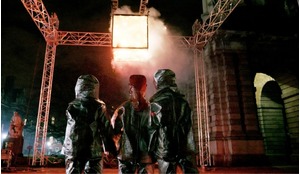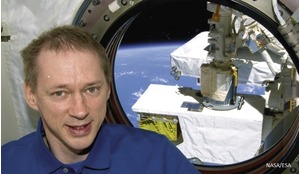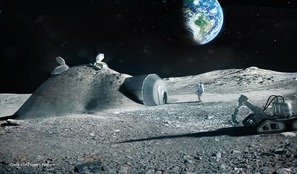Brazil’s space agency is responsible for coordinating the country’s space activities and fostering national and international cooperation to further its goals in space. The agency has succeeded so far primarily by pursuing a policy of joint technological development with other nations including China, India, Russia and Ukraine. Now, following the ratification of a technology safeguards agreement (TSA) with the USA, Brazil is ready for the next stage in its expansion, inviting the international commercial launch business to make the most of its facilities and unequalled launch position, just two degrees south of the equator.
The Brazilian Space Agency (AEB) is responsible for formulating, coordinating and executing the Brazilian National Policy on the Development of Space Activities (PNDAE) and the Brazilian National Space Activities Program (PNAE). It also coordinates the major activities carried out by other institutions, constituting the National System for the Development of Space Activities (SINDAE), including the National Institute for Space Research (INPE) and the Institute of Aeronautics and Space (IAE), as well as Brazilian universities and the private sector.
INPE is in charge of projects devoted to the development of satellites and related technologies, as well as R&D activities in the fields of Space Applications, particularly Earth Observation, and Space and Atmospheric Sciences. IAE is responsible for the development of Brazil’s satellite launchers and extensive sounding rocket programme and for the development of the Alcântara Launch Center (CLA), and for running the Barreira do Inferno Launch Center.
 Brazil’s Geostationary and Defense and Strategic Communications Satellite (SGDC) was launched from the Kourou Space Centre in French Guiana in 2017 for Brazilian government civil and military applications.
Brazil’s Geostationary and Defense and Strategic Communications Satellite (SGDC) was launched from the Kourou Space Centre in French Guiana in 2017 for Brazilian government civil and military applications.
Early success
Investment in space has a cross-sectional effect on other economic sectors creating highly qualified jobs and incometheir
Brazil’s earliest space endeavours date from early in the 1960s when space activities came under the purview of the Air Force. Military oversight of the Brazil Space Program continued until 1994, when it was handed over to the newly created Brazilian Space Agency. This was quite a time of change as all players, including the Air Force and the older space-related institutes, adjusted to working with the new civilian agency, and similar changes were occurring in other countries as their space programmes were transferred into civilian hands.
The early Brazilian space programme achieved good results developing the Sonda sounding rockets, pointing the way to the Satellite Launch Vehicle (VLS) orbital rockets that followed. For example, the final project prior to the development of the VLS programme was the self-piloted Sonda IV, a two-stage rocket used to transport scientific and technological experiment payloads from 300-500 kg in the range of 700-1000 km altitude that was launched seven times between 1984 and 1990.
Development of the VLS-1 began in 1984, after the first launch of the Sonda IV rocket. The launch vehicle was planned to insert a payload of 350 kg into low Earth orbit (LEO), up to 1000 km. The VLS-1 was one of the main objectives of the Brazilian space programme. Another important project was the development of a launch site, close to the city of Alcântara, in the State of Maranhão.
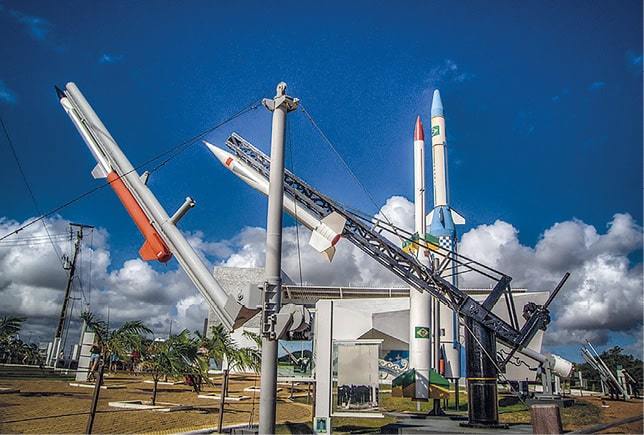 The Sonda family of sounding rockets I-IV.
The Sonda family of sounding rockets I-IV.
Perseverance in adversity
Investment in the VLS-1 programme was reduced, resulting in continuous delays. Three prototype vehicles were built. The first two made it off the launch pad (in 1997 and 1999) but did not complete their missions. On the third launch attempt on 22 August 2003 the rocket, which was intended to have launched the UNOSAT and SATEC satellites into orbit, exploded on its launch pad at the CLA, killing 21 people. The accident contributed to the stagnation of the development of new launching technologies, not just because of government inquiries that had to be carried out but also because many of those who died were scientists and engineers who worked on the programme.
Fourteen months after the accident, Brazil successfully launched its first rocket into space on 23 October 2004, from the CLA. A VSB-30 sounding rocket, developed in cooperation with the German Space Agency (DLR), was launched on a suborbital mission. Several other successful launches followed.
A Brazil and Ukraine joint venture, Alcântara Cyclone Space, was established in 2003 to launch satellites from the CLA using the Ukrainian Tsyklon-4 rocket, but the enterprise folded in 2015 due to budget problems and the uncertain future of the commercial launch market. After this failed joint venture, Brazil decided to replace the VLS programme with the Microsatellite Launch Vehicle (VLM) in partnership with DLR. The planned three-stage VLM-1 is intended to launch payloads of 150 kg into equatorial and polar orbits from 250-700 km altitude, but this programme has suffered from budget limitations and technological restrictions from foreign countries and it does not yet have a launch date.
Making changes
The CEA is the closest in the world to the equator, providing up to 30 percent fuel economy compared to other parts of the world and allowing access to both polar and equatorial orbits
The AEB has started the reorganisation of the activities of the space-related institutes in order to foster the country’s space industry. The Space Agency’s expertise provides the foundation from which to propel future engagement and growth for the national space industry. The intention is to design a Brazilian Space Industry Roadmap that will help to inform the strategic direction now being developed and set out viable opportunities that can help launch Brazil’s space industry towards new perspectives.
In partnership with industry and academia, AEB intends to provide the grounds to transform and grow a globally respected Brazilian space industry, opening up markets, improving productivity, creating new jobs, and securing our STEM (science, technology, engineering and maths) talent pipeline into the future.
To make all this possible, Brazil needs to change its space industry mindset, embracing the so-called NewSpace culture and environment. The focus today is no longer on government procurement but on how the private sector can actively participate in space. New projects should be compatible with the needs of society and budget limits. Brazil is learning from past experience and improving its actions to achieve its goals.
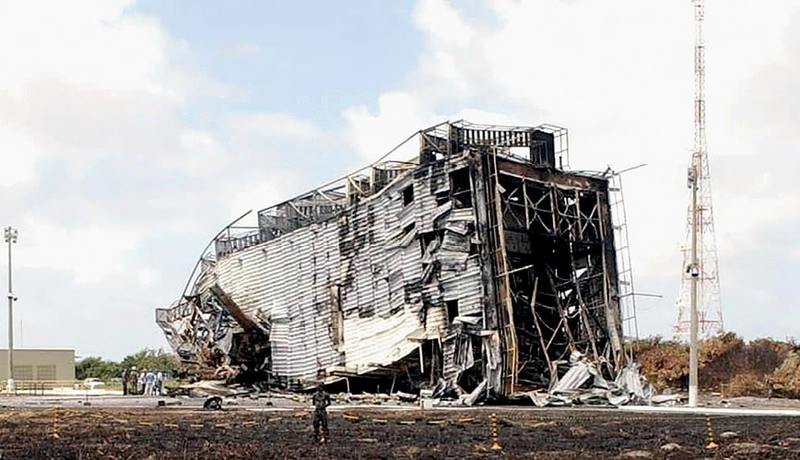 The 2003 Alcântara VLS accident was a major setback to Brazil’s space programme. The rocket exploded on its launch pad, killing 21 people, many of whom were scientists and engineers on the VLS programme.
The 2003 Alcântara VLS accident was a major setback to Brazil’s space programme. The rocket exploded on its launch pad, killing 21 people, many of whom were scientists and engineers on the VLS programme.
Creating a National Space Council (NSC), composed of the Ministry of Science, Technology and Innovation; Ministry of Defense; Ministry of the Economy, and led by the Presidency Cabinet, will allow for more effective interaction by the stakeholders related to space activities and provide the space sector with another level of commitment from policy development and investment.
At an operational level, an Executive Space Committee (ESC), which will accommodate other space institutions, with AEB as the chair of board, will allow another level of planning and consolidated vision to invest public money, and to better identify public-private partnership possibilities.
Brazil’s role in the space ecosystem continues to broaden in response to rapid changes in the global economy. AEB is reviewing the regulatory and commercial legislation, focusing on attracting companies to do business and bring their facilities to Brazil. The Brazilian Space Act, currently under development, will regulate all the commercial operations and provide the legal certainty that companies need to operate here. More than a law, AEB is working with the Ministry of the Economy and Ministry of Science, Technology and Innovations to build a friendly environment for business and R&D. Brazil has not only a good position for launching vehicles but also a good structure of space engineering education, research facilities and national companies with competitive capabilities.
The Brazilian Space Act is aligned with international initiatives, respecting international treaties, but also looks forward to new possibilities for space exploration. It will go before Congress this year.
Nevertheless, it is not enough to change the legal and economic environment if we do not change the way that national space companies look at the space sector. The space industry is not static. It is moving from a sector where the Government was the main institution, with long-term and high value projects, to one where the private sector is increasing its participation, with more short-term and not-so-high value projects. The size of the satellites has also been changing. Large satellites are being replaced by smallsats. Smallsats have a better impact on industry in terms of demand for products because the lifetime of a small satellite is shorter than the big ones. Of course, that does not mean the end of large satellites as they continue to have a market niche.
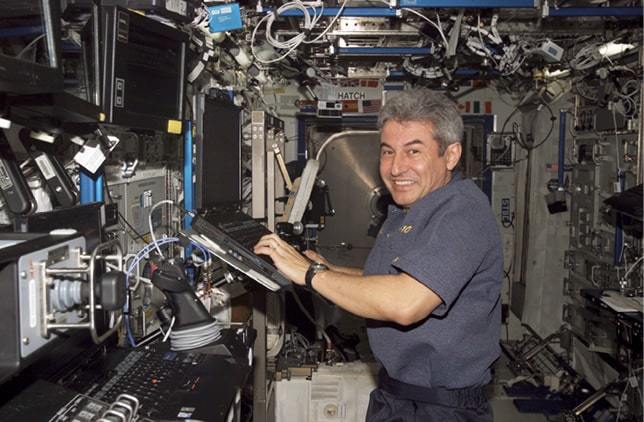 Brazil’s first astronaut, Marcos Pontes in the Destiny laboratory of the International Space Station in April 2006.
Brazil’s first astronaut, Marcos Pontes in the Destiny laboratory of the International Space Station in April 2006.
New opportunities
Brazil is in a favourable position to capture commercial launch operations from the global space sector
This new configuration of the space sector opens a range of opportunities for private companies. However, to access it, Brazilian space companies must understand that the space sector should not be restricted to a region or country, or to Government procurement. It is a global value chain and national companies can be partners in this international supply chain, improving their capabilities and competitiveness. The role of the Government is to create the conditions and opportunities for private companies to show their products on foreign markets.
Moreover, it is time for companies of all sizes. Many start-ups are entering the space sector around the world and the financial market is learning how to evaluate space initiatives. For the first time the space sector is proving to be a competitive and profitable bet for investors.
In terms of market opportunities, the signing of the US-Brazil Technological Safeguards Agreement (TSA) in 2019 was a turning point for the commercial space sector in Brazil, allowing for the launch of rockets containing US technology from the Alcântara Launch Center. In addition to opening up CLA to the world commercial space launch market, the Brazilian private sector should seize opportunities to expand the region’s economic development, creating new companies and jobs in logistics, fuel, transportation, integration, systems and subsystems, accommodation and other related fields.
Maximising use of the Alcântara Space Center (CEA) is not just a technical issue. AEB believes that the space sector and the launching segment have the power to change the social and economic environment of Alcântara´s city, the State of Maranhão, and Brazil as a whole. Investment in space has a cross-sectional effect on other economic sectors creating highly qualified jobs and income.
This positive economic effect was evidenced by the beginning of the works of the Brazil-Ukraine joint venture launch complex. The gross domestic product per capita of Alcântara´s city increased more than 50 percent from 2011 to 2012. The beginning of private sector activities could have the same effects, in a proportional way, as Kennedy Space Center had on Florida State. More than starting a new segment, we hope to completely transform the area showing the power of the space sector to create socioeconomic benefits.
AEB and the Brazilian Air Force signed a Cooperation Agreement in May 2019 to enable private use of the Alcântara Space Center. AEB is the ‘front-end’ for initial discussions for private use of CEA, while the Brazilian Air Force is responsible for signing the contract with companies.
The recent Brazilian Space Agency call for companies interested in launching from Alcântara will allow the country to start private company launch operations from Brazil’s territory in 2021, using the in-place space facilities and infrastructure built on Brazil’s unique geographical location.
A key advantage driving Brazil’s space industry is the nation’s strategic southern hemisphere location and land mass. The CEA is the closest in the world to the equator, providing up to 30 percent fuel economy compared to other parts of the world and allowing access to both polar and equatorial orbits. When considered together with Brazil’s aeronautics and space industry, Brazil is in a favourable position to capture commercial launch operations from the global space sector.
These attributes make Brazil an attractive partner for integration into global value chains and provide advantages for development of positioning services and technology, Earth observation calibration, validation and data analytics, and space situational awareness activities.
The licensing process will be reviewed using lessons learned from other partners, such as the Federal Aviation Administration (FAA): it will allow the recognition of licenses issued by other countries, similar to what happens in the aviation sector.
The AEB’s objective is to create an efficient licensing process, always having in mind the safety of space operations. In the same way, AEB is working to have an efficient and competitive third-party liability perspective, providing reasonable figures that will allow small companies to operate in Brazil. The concern is to guarantee the safety of CEA facilities, workforce, and nearby cities, without overcharging the private sector.
Space-based services are an important asset for national security, the operation of industries and the day-to-day life of Brazilians
CEA is located within a Brazilian Air Force (FAB) installation and so the contract to operate from Alcântara will be with the Air Force, the same way it happens in other countries. The contract with the FAB will address the use of existing and available infrastructure, employment of outsourced companies (depending on the need for the operation and the interest of the private operator), building rental, use of the airport, hotel support, food, security etc. AEB is highly confident that at least one contract will be signed by the end of 2020.
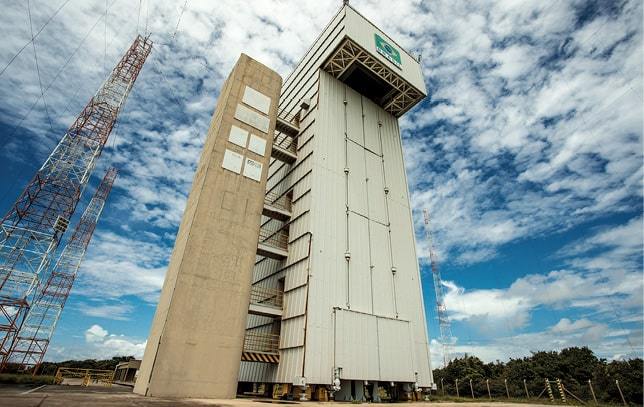 Infrastructure at Brazil’s Alcantara spaceport.
Infrastructure at Brazil’s Alcantara spaceport.
AEB is also reviewing the Space Roadmap to provide public opportunities for growth and leveraging established industries to repurpose them for space – like new materials, mining to extract water, oxygen and inks to print spare parts, agriculture to grow food in inhospitable terrain, space object tracking, and space exploration. The identification of enablers for unlocking these opportunities is the challenge.
We are committed to continuing to grow a diverse and robust space industry in Brazil, including bringing our science, technical solutions and partners to the table to help Brazil secure its place in the space ecosystem.
The profound transformation of space technologies and increasing demand for space-based services are driving the emergence of a new space age and, with it, many new opportunities for the growth of Brazil’s own space sector.
Space-based services are an important asset for national security, the operation of industries and the day-to-day life of Brazilians. Transportation and logistics companies rely on positioning technologies to track their fleets; mining and resource industries use satellite imagery for exploration, to plan infrastructure, and to conduct impact studies; and satellite communications play a key role in enabling improved connectivity for remote areas of Brazil.
Despite the challenges we all face this year, the Brazilian space sector is confident that we can use this time to prepare for 2021 as the beginning of a promising new era for space activity in Brazil.
About the authors
Michele Cristina Silva Melo is a Science & Technology Analyst and Coordinator of Space Transportation at the Brazilian Space Agency, coordinating economic studies on the space sector, the commercialisation of the Alcantara Space Center, economic regulations and their impact on space sector. She has a PhD in Economics, a Masters in Industrial Economy, and is an Adjunct Professor of Fluminense Federal University teaching Microeconomics and Industrial Economy disciplines.
Paulo Eduardo Vasconcellos is Director of Space Transportation & Licensing for the Brazilian Space Agency. A specialist in Strategic Planning & Management, and a Business Analyst in the development of information systems for Critical Mission, Intelligence, Knowledge Management and Corporate, he is a Retired General Officer of the Brazilian Air Force. He was the representative for Brazil/Sweden High Level Group (Executive Committee), and lately the CIO for Brazilian Air Force.
Editor’s note: this editorial feature was sponsored by the Brazilian Space Agency.









